Intro: The view of modern Panama depends on where you stand: in a luxury high-rise city condo or a tiny jungle village or a small working class town. All three will present a different face of homosexuality in this famous canal country. Homophobia runs high but gay life carries on openly, hidden or appreciated in different parts of the country. But only one LGBT organization stands 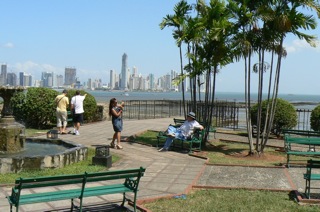 against HIV and discrimination.
against HIV and discrimination.
By Richard Ammon
GlobalGayz.com
March 2010
Forces in Panama Life
Not unlike other Latin American countries, Panama has a strong prejudice against homosexuality. “There are no gay rights here,” declared Ricardo Beteta, director of Panama’s only LGBT advocacy organization, AHMNP (Asociación Hombres y Mujeres Nuevos de Panama, ‘New Men and Women of Panama‘).
“Thanks to the power of the Catholic church homophobia runs high. Can you believe that a friend of mine, because he is a minister from the MCC protestant church in Guatemala, has to have the Catholic archbishop’s consent in order to stay here as a legal immigrant. What kind of civil society is that!?”
AHMNP was founded in 1996 but did not receive legal recognition until 2005 after a three year legal battle with the authorities and the Catholic church. In 2010 it is still the only gay and lesbian organization in Panama. In 2004 they presented a petition calling for partnership rights, which was denied.
![]() In June 2005 Panama’s first Gay Pride March was held with 100 AHMNP demonstrators in the central city. By 2007 the crowds had significantly increased. See report.
In June 2005 Panama’s first Gay Pride March was held with 100 AHMNP demonstrators in the central city. By 2007 the crowds had significantly increased. See report.
Finally in August 2008 homosexuality was legalized by presidential decree–not by popular vote or legislative action but by a president with some sense of moral decency (or political value). However, while homosexuality is no longer considered a criminal offense, there has been no follow-up legal protections approved for gay individuals nor any recognition for LGBT couples. See report.
Gays and lesbians are banned from both the armed forces and the police. Panama does not have an army but has a civil guard for emergencies and the police service is civil and not open to homosexuals or lesbians. See UN report.
The absence of laws protecting gays from discrimination has been an important point of activism for AHMN who persist in lobbying the government to outlaw discrimination on the basis of both sexual orientation and gender identity.
Another Force
“Another important consideration in Panama is that it is very, matriarchal,” said David Diego, a good friend of Ricardo’s and host of PanAmerican Rainbow Alliance Together United (PARATU) an online Yahoo group of gay expats and other supporters of human rights in Panama. PARATU is a Yahoo group. explained.
“This may actually have a larger impact on gay life than does the church: men, gay men or bi men, are not supposed to leave the home of their mother until such time as they marry. Thus you find 60 year old gay men still living at home with mama.
“Or, out of desperation gay/bi men will take a bride so as to escape their mother. These same men will then often take a boyfriend and, if rich enough, set up a second household for them to share. Otherwise they have men on the side and take to them a Push (sort of a no tell motel) for sex whenever possible. The only exception to gay men living alone is when they have moved from another city for work, usually into Panama City.”
Aside from the church and mothers, another powerful force in Panama is money and free-wheeling enterprise. “Look all these condo skyscrapers,” David said.
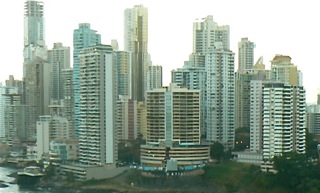
We were standing on high floor of his luxury condo in upscale Pacific Point viewing the dozens and dozens of recently erected high-rise towers (photo right) containing thousands of condos. “Many of the high rise buildings appear only minimally occupied because many are second homes for American, Canadians, Europeans and South Americans who spend only brief times in the city. And others belong to speculators, primarily Americans, who had hoped to make a killing but now find themselves with apartments they are unable to sell or rent at the price they need to meet their mortgages.”
Unfortunately, it is a well-know fact that not all of the money that flows into and out of Panama is ‘clean’. However, to that end, the current president is making a concerted effort to clean up corruption—or at least making a public gesture. A former president is currently under house arrest and a couple of foreign ministers are already in jail for bribery and corruption.
Ricardo
In his private time, Ricardo (photo below left) heads a household of relatives and friends in a suburb of Panama City. He owns two adjacent houses, one for himself and one for his mother who suffers from Parkinson’s disease. To care for her he has moved in with her while still maintaining his full time position as a research librarian for the Smithsonian Institute in Panama.
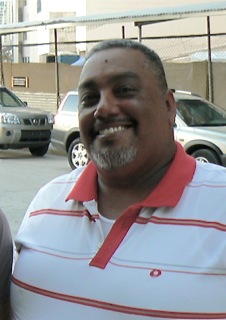
In his own house are living extended family of brothers, sisters and a nephew whom he has raised since 4 years of age. He also provides Pampers for the newest members of the family.
In his efforts to provide sex education in schools he has met with strong opposition from religious groups who oppose any suggestion of same-sex activity. There is no government funding for safe sex education despite the high prevalence of closeted gay and bisexual husbands in Panama—including many of high political, religious and social rank. (One priest was recently accidentally outed on the internet, said Ricardo, because of his nude photos; he was defrocked. Meanwhile, other more discreet priests continue to have lovers and enjoy the hidden pleasures of secular life.)
Although violent gay bashing is rare in Panama Ricardo said he was once assaulted by an deranged HIV-positive man who was strangely angry that Ricardo was attempting to distribute condoms. Nevermind that the HIV infection rate has recently risen to 17% and the general population has grown by 20% in the last ten years alone.
David
David L from runs a similar household of friends and relatives. He is an American ex-pat with a Panamian partner. (His late partner of 35 years passed away in 2008.) David’s current lover is not out to his family or friends, many of whom would not speak to him again were they to know of his relationship with David. As well, the lover’s young adult son lives with them. He is comfortable enough in the situation that he occasionally has school chums or his girlfriend over for a swim or to watch TV.
And there’s the housekeeper who comes in three times a week and has been with him for three years. She not only cleans the apartment but also has become enough of a family member that she and her husband visited David during a recent hospital stay and has been known to fix chicken soup for any household member who might not be feeling well. “She seems very happy taking care of her four men”, David said.
Add to this mix, Lorenzo (photo left), who also lives here. Lorenzo is a 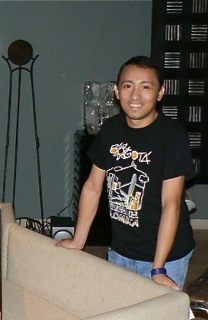 structural engineer. At 24, he has had a 4-year long-distance relationship with a 71 year-old Canadian boyfriend in Vancouver.
structural engineer. At 24, he has had a 4-year long-distance relationship with a 71 year-old Canadian boyfriend in Vancouver.
This polyglot household churns with comings and goings with three members taking classes, David running the domestic scene and managing finances. Were it not for him the others would not be living nearly as well as they are. Indeed, his boyfriend’s parents are rural peasant farmers with no running water. When the mother came to visit h she was fearful of the elevator.
The Others
Meanwhile, life among the commoners continues in the usual mundane manner. We spent a fine day walking around the colonial old town, Casco Viejo (photo right), to see the remnants of a Spanish empire and of the French Canal Company. It’s quiet and placid now, 130 years after the French took over the city with much fanfare and chaos and stated to dig the canal.
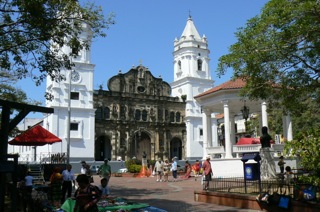
Later, along the city’s narrow Causeway promenade that stretches south toward the Pacific we came across a young gay couple walking their miniscule Chihuahua. One guy, rather skinny and fey, sported a rainbow belt that was hardly necessary given the currently in-style low-hung jeans that barely hugged his bum to advertise his preferred brand of underwear.
They were walking along with the parents of one of them. Nothing special happened, as usual. Just mom and pop out for a walk with the gay kids.
Paradoxes
Yet there is paradox to these modern forces. Devout Panamanians do not go to church in vast numbers (“they watch it on TV,” said one friend) and conservative thinking only goes so far against free enterprise and Latin sexuality. Sex and materialism are strong arteries to the church’s veins.
One day on the public bus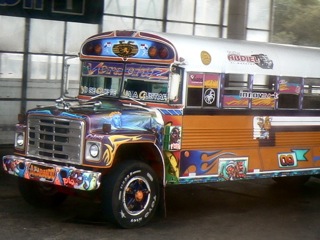 from the north coast city of Colon (at the north end of the Panama Canal) we were captives to a raunchy blatantly sexual video, ‘Miss March’ (“rated R for strong crude and sexual content, nudity, pervasive language and some drug use”). that played entirely from start to finish. It’s about two men and their sexual escapades. It was one step away from pornography. Curiously, of the passengers around us some were asleep, some on cell phones, some were watching indifferently.
from the north coast city of Colon (at the north end of the Panama Canal) we were captives to a raunchy blatantly sexual video, ‘Miss March’ (“rated R for strong crude and sexual content, nudity, pervasive language and some drug use”). that played entirely from start to finish. It’s about two men and their sexual escapades. It was one step away from pornography. Curiously, of the passengers around us some were asleep, some on cell phones, some were watching indifferently.
Indifference? David Lortie observed that “Latino sexuality is like breathing here. It’s said that if it walks and talks a Latino man will f— it… One evening,” David continued, “I looked out my kitchen window at the unfinished condo tower (by Trump) going up across the street and saw three workers going at it after work. They probably were not gay, just horny Panamanians It was an amusing sideshow and points to this issue of Latino sexuality.”
Prostitution
As well, female prostitution is legal and regulated (sort of) in Panama. Prostitutes are required to register and carry identification cards but many avoid registering since they are in the country illegally having been trafficked or coerced by poverty from Columbia, The Dominican Republic, and Central America. Not surprising, the number of single mothers is increasing as prostitutes continue to arrive. That is not to say that all prostitutes are mothers and all single mothers are prostitutes (putas). Unfortunately, it seems the Catholic church prefers unwed mothers over allowing the use of any sort of birth control.
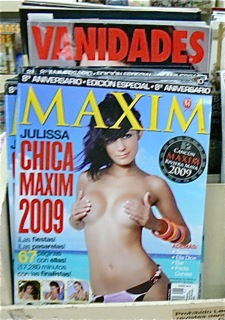
Less known and visible are the men who join the trade. Some are openly homosexual and participate as boy toys for the lonely male customer, who wants company for a couple of hours. In general there is little attention paid to male prostitution. The workers tend to operate furtively in Panama City in specific areas such as the Legislative Park and Pedregal. Others are offered online as masseurs while others are strictly heterosexual, or are bisexual.
Male prostitutes usually work independently and do not have pimps (outside of escort services). Because they do not officially exist and despite their increased risk of sexually transmitted diseases there is no specific health education outreach authorized to MSM (men who have sex with men) by the government. Roberto and his AHMNP staff appear to be the only ones concerned about this core ‘vector’ group, especially since most MSM are deep in the marriage closet and the prostitutes avoid visibility. AHMNP are crucial, unappreciated and under funded in this effort as they strategize how to use their meager resources for MSM and free condom distribution.
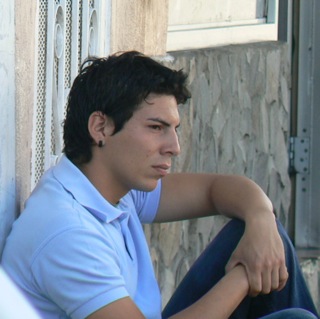
According to one male prostitute, foreigners come to Panama attracted by handsome Panamanian young men who have a reputation for ‘being passionate and willing to fulfill their client’s fantasies’. (Curiously, other Panamanian gay men think the guys from Columbia are even better looking!)
Where sexual expression is so fluid and not separated into simplistic categories of homo, hetero, bi, trans, it may involve all or some of these variants. This makes safe-sex education a challenging task for any health ministry, let alone a small group like AHMNP.
Cesar and AHMNP in David City
Panama’s third largest city is David, a couple of hundred miles west toward the border of Costa Rica. Here can be found a bustling city with shops full of modern conveniences, the latest styles of clothing, large supermarkets and shiny malls. Some people scatter around in their cars or motorbikes while most others take the bus, the major form of transport in predominantly poor Panama.
For gay folks, there is only one gay bar, Renagali, that’s open all week. It’s no wonder the gay community in David is reportedly more ‘relaxed’ than in Panama City.
On the surface, that’s the extent of the scene here, although one could add the gay/mixed B&B a few miles north in scenic Boquete town called Cabañas B&B Momentum. It’s owned by a bisexual Canadian, Ken Neal, and serves as a quiet unannounced magnet for LGBT expats and locals in the area. See more about Boquete.
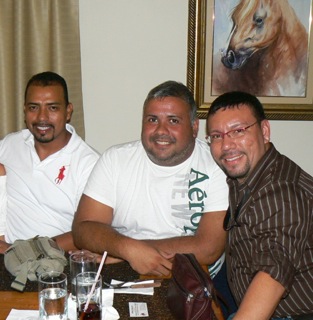
But an encounter with members of the David chapter of AHMNP opens up a remarkable view to an impressive group of rights activists and health educators who are busily engaged with HIV and sexual health outreach in David and beyond.
Headed by Cesar Gantes, (at right in photo) a medical doctor employed by Panama health ministry to educate, test and treat HIV affected and infected people in the Comarca region in northwest Panama.
The Comarca is one of Central America’s most primitive regions of jungle where the Ngäbe-Bugle indigenous people live. To get to some areas Cesar and staff have to travel for days by bus, boat and trail to reach villages. Some of these people have had so little contact with the modern world that they wear little or no clothing.
Medicos Sin Fronteras help maintain 16 health posts and an area hospital in the Comarca staffed with Cuban doctors. These doctors train indigenous health workers to be physician assistants and help spread out the health care and reach deeper into the jungle populations. The University of Panama maintains a campus in the area to further train local health specialists. There are 7 districts in the Comarca each with about 420 communities and about 2500 people in each community.
AHMNP has a core group of 17 active member in the David area who organize monthly HIV and sexual and health seminars, mostly in the city and suburbs. Their emphasis is health and how to maintain oneself free from HIV and other transmitted diseases with medical check-ups, advocating condom use and getting blood tests.
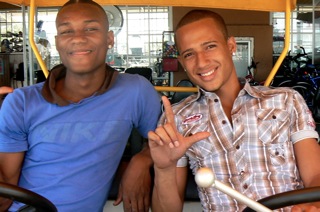 AHMNP presenters do not hide the fact that they are gay but don\\\\\\\’t make an issue of it. They talk about same sex behavior as part of the larger spectrum of human sexual behavior. They try to persuade sexually active people to get tested and are ready to administer the quick-stick blood test. Some trans indigenous people who come to David to work–sex or otherwise–are sometimes hard to access since they are thrice-marginalized by being trans, indigenous and gay. (Fortunately, to date, test results show an incidence rate of about 1% among indigenous people.)
AHMNP presenters do not hide the fact that they are gay but don\\\\\\\’t make an issue of it. They talk about same sex behavior as part of the larger spectrum of human sexual behavior. They try to persuade sexually active people to get tested and are ready to administer the quick-stick blood test. Some trans indigenous people who come to David to work–sex or otherwise–are sometimes hard to access since they are thrice-marginalized by being trans, indigenous and gay. (Fortunately, to date, test results show an incidence rate of about 1% among indigenous people.)
To advertise these seminars AHMNP contacts area leaders such as teachers, medicine men, doctors, health professionals and political leaders who inform friends, students, constituents, patients and the public about the meetings.
Unfortunately there is no specific government program to target high-risk MSM people. Funding comes from non-government agencies such as AmFar. Cesar privately doubted that such a program would not have much success anyway since no one would be willing to admit—to himself or others–that he has sex with other men. Instead of outreaching to them, a MSM program would only scare them off. “There is a ‘barrier wall behind which they hide for sure.”
The dubious upside of this kind of denial is that there is little overt homophobia in David, despite a generalized disapproval of homosexuality in Panama. As in many Latino cultures and in Panama City, it is estimated that most gay and lesbian people are married with kids and maintain the secret of their bisexuality. Ricardo and Cesar both agree that they are a difficult population to specifically access. More effective they said, are the general sex ed seminars where MSM can show up–and leave–anonymously.
AHMNP works closely with the health ministry to help funnel modest funds to Indian groups and tribes. Cesar reported little resistance from the ministry toward AHMNP as a gay group. “I think because of our ‘soft’ approach to gay issues that it’s less threatening to government officials. In Panama City the AHMNP people push harder because they can. The political situation there for gays is tougher than here.”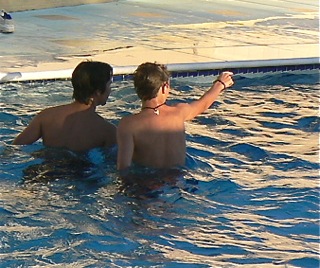
As a result, the mayor of David is gay friendly and supports AHMNP activity with a token $200 per month. He is not put off when AHMNP talks about gay rights since he can readily see the beneficial health work of the group.
An amusing aside, Cesar mentioned that the local Catholic priests are gay-friendly because gays make up a good portion of the church choirs in David. So necessity, again, is the queen of invention.
History of Homosex in Panama
Most people in our modern world do not give much thought to homosexuality. Panama is no exception. What little they do consider about sexual minorities is a secondary aggregate of negative opinion from religious, political and cultural leaders and attitudes. Modern homosexuality is a victim of distorted historic re-vision and myth about human sexuality.
Nevertheless, history does speak for itself–however fragmented that history may be. An intelligent approach to this fraught issue reveals that same-sex activity is as ancient as humanity itself. Much focus is given to the Greek tradition and their celebration of male youth and athletic and military prowess. Real names and their heroics are recorded by hand. Most of us know about Achilles and Patroclus and their war-torn passion.
But there are no parallel records for similar relationships in the Americas prior to the Spanish invasion. Native civilizations did not inscribe their leaders with stylus and papyrus but rather carried their traditions in stories, songs, dance and rituals.
An exact account of such a complex historical subculture is virtually impossible but scholars and historians have cobbled together a likely view of ancient Central American homosexuality.
The following summary remarks are found in Wikipedia:
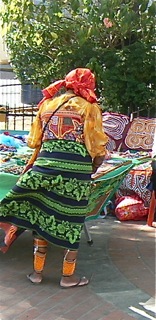 “Among indigenous peoples of the Americas prior to European colonization, a common form of same-sex sexuality centered around the figure of the Two-Spirit individual. Typically this individual was recognized early in life, given a choice by the parents to follow the path and, if the child accepted the role, raised in the appropriate manner, learning the customs of the gender it had chosen.
“Among indigenous peoples of the Americas prior to European colonization, a common form of same-sex sexuality centered around the figure of the Two-Spirit individual. Typically this individual was recognized early in life, given a choice by the parents to follow the path and, if the child accepted the role, raised in the appropriate manner, learning the customs of the gender it had chosen.
“Two-spirit people were commonly shamans and were revered as having powers beyond those of ordinary tribe members. Their sexual life was with members of the same sex.
“Homosexual and transgender individuals were also common among other pre-conquest civilizations in Latin America, such as the Aztecs, Mayans, Quechas, Moches, Zapotecs, and the Tupinambá of Brazil. The Mexica worshipped Xochiquetzal, “the goddess of non-procreative sexuality and love. . . Xochiquetzal was both male and female at the same time, and in her male aspect (called Xochipilli), she/he was worshipped as the deity of male homosexuality and male prostitution.”
The Spanish and the Sodomites
Such traditions were about to be subjected to a disastrous fate with the invasion of the Catholic Spaniards in the early 16th century. Prior to these invasions, in 1483, the Spanish Inquisition had begun during which ‘sodomites’ were stoned, castrated, and burned. Records reveal that between 1540 and 1700, at least 1,600 people were prosecuted for sodomy. The number is likely much higher.
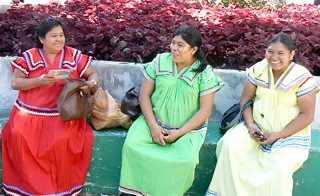 In the New World the Spanish conquerors were reportedly “horrified” to discover same-sex activity practiced among some native members of different societies. No surprise they attempted to contain it by subjecting the “berdaches”, as the Spanish called them, to severe penalties including public execution and burning, similar to the European manner.
In the New World the Spanish conquerors were reportedly “horrified” to discover same-sex activity practiced among some native members of different societies. No surprise they attempted to contain it by subjecting the “berdaches”, as the Spanish called them, to severe penalties including public execution and burning, similar to the European manner.
In a famous example of homophobic cruelty, in 1513 the conquistador Vasco Nunez de Balboa wrote in his diary that he discovered the village of Quarequa [in modern-day Panama] was “stained by the foulest vice”. The tribal king’s brother and a number of other courtiers were ceremonially dressed as women, and according to the accounts of the neighbors shared the same “passion”—presumedly referring to sodomy. Balboa reportedly ordered forty of them to be torn to pieces by dogs, an common horrific practice against these unarmed and mostly naked ‘heathens’.
Very little if any specific writings exist to document further treatment or events regarding subsequent sexually variant individuals. As the Conquistadores spread their dominance and drained the continent of its precious metals, jewels and indigenous culture they also imposed its own rules of Christian morality. It’s not likely treatment of homosexuality got any better for the next four hundred years.
In the modern era, strangely, in 1871, Guatemala and Mexico decriminalized homosexual acts. How and why is not clear.
The Canal and Sex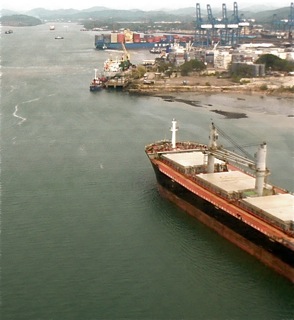
In Panama, 19th century history took a bizarre turn because of its geography. First came the ’invasion’ by American entrepreneurs and engineers and laborers in the 1850’s to cut a railroad across the isthmus, a distance of about 50 miles. Following the railroad’s completion in 1855, came the French invasion headed by Ferdinand DeLesseps’ International Canal Companie for ten disastrous years. This was followed by the Americans’ valiant and gigantic canal success from 1905 to 1914. (photo right)
For these monumental enterprises, tens of thousands of poor male workers, mostly Caribbeans, were imported from Jamaica, Barbados, South America, USA and Africa. Among these, only a tiny minority (mostly whites) were able to bring their wives or families. (Many others were glad they didn’t since yellow fever and malaria killed nearly 40% of everyone who arrived in the canal zone area until the Americans figured out how the diseases were spread.) See the book by David McCullough: The Path Between the Seas
It’s not wholly inappropriate to count the situational homosexuality among these workers as part of Panama’s history. An insightful and large study of situational homosexuality was conducted by researchers in 20th century South Africa that looked back at a hundred years of mining camps in that country.
The connecting factor between these two distant worker populations is the tens of thousands of mine workers and migrant laborers who left home for long periods of time to earn money and lived closely among a virtually all-male environment. Valuable data can be plausibly projected from Africa to Central American, and since this is a ‘probable’ history we will accept it as viable.
In the African mining labor camps homosexual activity replaced heterosexual norms as hormones and desire for intimacy persuaded many (not all) men to take substitute spouses with concubines, lovers and ‘wives’ with other willing men. Of course, natural homosexuals were delighted but hetero men willingly joined the imposed sexual tradition of taking ‘mine wives’ to satisfy their needs. There are reports of monogamous, sincere and loving couples among the workers, some that lasted even beyond the work camps.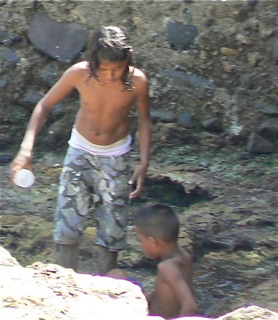
During both the French and the American canal efforts, upwards of 40 thousand men labored together, half-naked in the sweltering heat in dreadful conditions (improved during the American dig) in close quarters. Working 12 hour shifts these virtual slaves lived in close contact with little comfort or pleasure.
Thousands gave up and went home to escape the wretched conditions and thousands more arrived, driven by poverty. Although housing (bunk houses) was provided, many preferred to camp out in the surrounding jungle in make-shift shelters to gain some relief from the heat and have some privacy.
Among such a population, as in Africa, it is highly likely that bonds formed among worker couples that were similar in variety and duration to the African relationships thus creating an odd but tender scattered community of MSM partners. It’s interesting to ponder whether such dyads were semi-accepted, were known but ignored, or were secretive among these diverse populations from all over the Americas (versus the miners who came from Southern Africa)?
More Modern Times
In 1924 Panama, Paraguay and Peru legalized homosexuality. But in 1949 Panama’s health code was reversed by presidential decree, no doubt under pressure from the Catholic bishops, to re-criminalize the ‘abomination’.
Then in 2008 July President Martin Torrijos and Minister of Health Rosario Turner issued Decree Number 332, which again modified the Health Code to legalize sexual relations between consenting adult men. The decree also set an equal age of consent (18) for hetero and homosexuality under the revised Penal Code.
Today’s urban LGBT scene, slight as it is, reveals real-time gay discos (and one “spa” that operates daily from 6 p.m. to 1 a.m.) coexisting among family grocery stores and Mac Donald’s and dental offices in downtown Panama City and David City. For the most part these venues are ignored rather than tolerated.
The Kuna Tradition
Quite separate from the Canal workers and despite centuries of disapproval and persecution against same-sex behavior, today’s indigenous Kuna people’s view of homosexual behavior is still mellow compared to mainstream society in modern Panama.
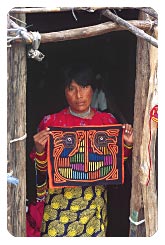
“When the Spaniards conquered the isthmus, they encountered indigenous Kuna people who didn’t share their prejudices against homosexuals. Now after more than 500 years of Hispanic influence the Kunas have efforted to keep to themselves and have continued a culture that not only tolerates gay men and lesbians, but considers them to have special sensitivities that are good for a society to have.”
Kuna Yala is an autonomous territory included in the Comarca, mentioned above, that’s inhabited by the Kuna indigenous people. The name means “Kuna-land” or “Kuna mountain” in the Kuna language. The Kuna have four gender classifications: male, female, omekit (woman-like male), and macharetkit (man-like woman). Male gender-crossing among Kuna is characterized by a choice of productive labor and demeanor and only secondarily by sexual orientation. Also see this page.
Finally
“Today, the Kuna Yala area is quietly know as one of the noteworthy destinations for gay and lesbian tourism, a prosperous little niche in the overall tourist industry. But the people involved in that business prefer not to talk to the press about it because they don’t want adamantly ‘proud’ men coming around to their tour agency offices looking for the ‘best’ gay places. And they certainly don’t welcome evangelist types who don’t understand Kuna culture coming to indigenous communities to ‘save’ the people there.” See this report.
About Kuna Berdache:
Kuna crafts, gender, and the global economy By Karin Elaine Tice pp 73-75
So where is the ‘gay Panama scene’ in modern times? It appears to be everywhere in many forms, visible and invisible, mod and historic, indigenous and expat, Hispanic and indian, closeted inside marriage and marching Out Proud, secreted behind HIV and outreached to with compassion. Not bad for a homophobic, Catholic and conservtive society. More aout gay Panama.















